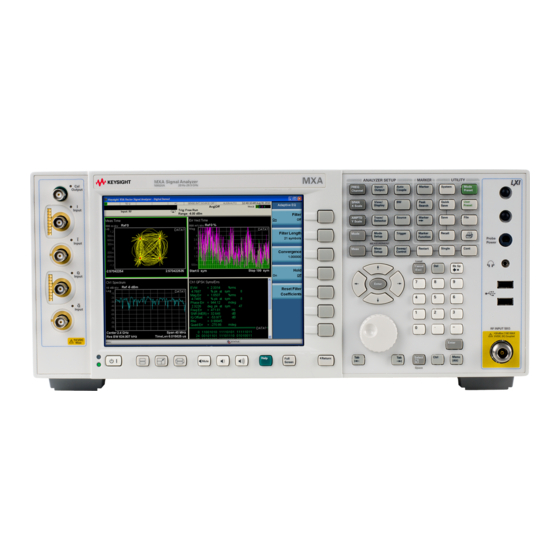
Keysight X Series Measurement Manual
Signal analyzers
Hide thumbs
Also See for X Series:
- User & programmers manual (3096 pages) ,
- User reference (2852 pages) ,
- Programmer's reference manual (2650 pages)
Table of Contents
Advertisement
Keysight X-Series Signal Analyzers
This manual provides documentation for the following analyzers:
PXA Signal Analyzer N9030A
MXA Signal Analyzer N9020A
EXA Signal Analyzer N9010A
Notice: This document contains references to Agilent.
Please note that Agilent's Test and Measurement business
has become Keysight Technologies. For more information,
go to www.keysight.com.
CXA Signal Analyzer N9000A
MXE EMI Receiver N9038A
EMI
Measurement
Application
Measurement
Guide
Advertisement
Table of Contents















Need help?
Do you have a question about the X Series and is the answer not in the manual?
Questions and answers